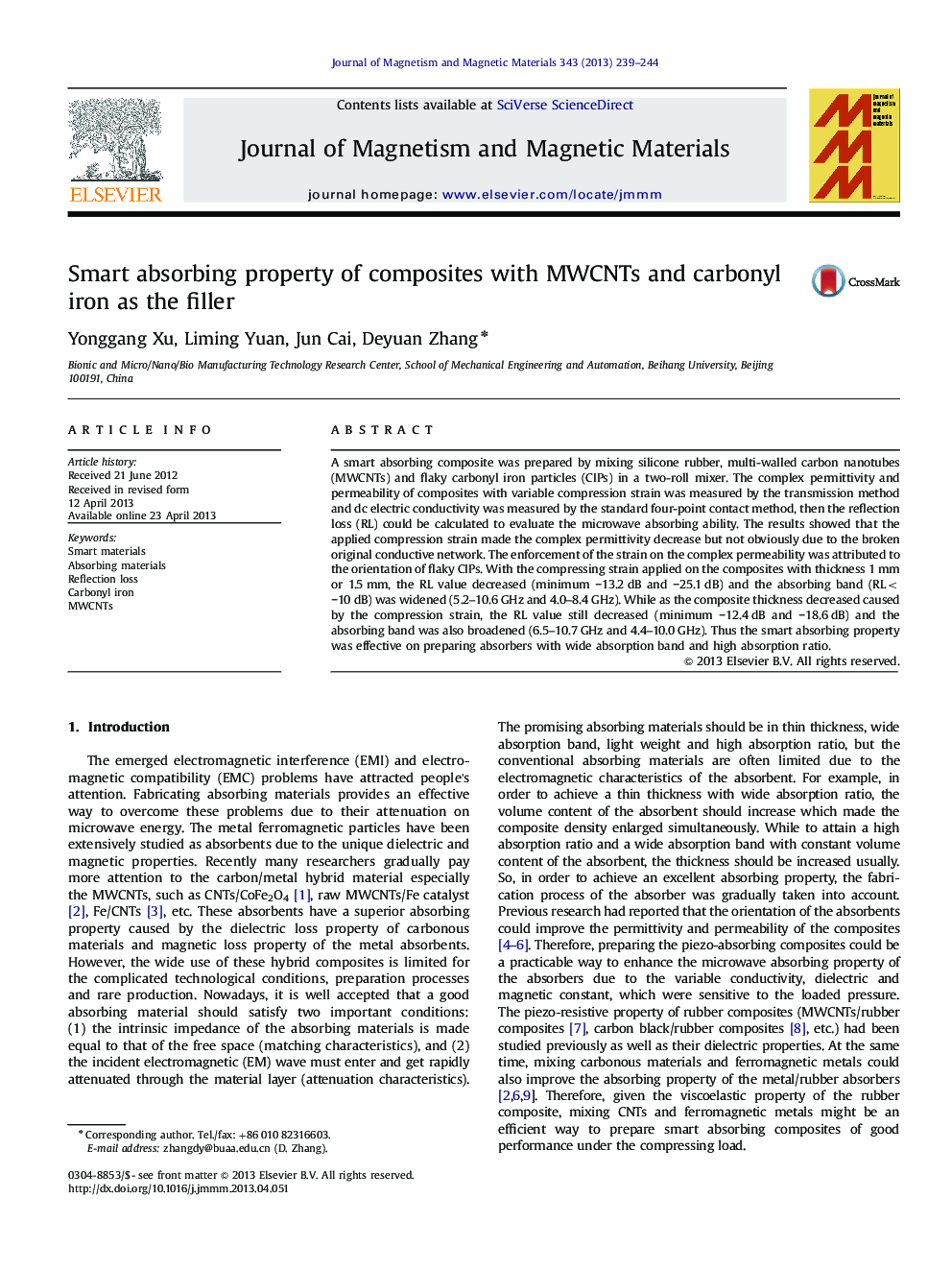| Article ID | Journal | Published Year | Pages | File Type |
|---|---|---|---|---|
| 8158306 | Journal of Magnetism and Magnetic Materials | 2013 | 6 Pages |
Abstract
A smart absorbing composite was prepared by mixing silicone rubber, multi-walled carbon nanotubes (MWCNTs) and flaky carbonyl iron particles (CIPs) in a two-roll mixer. The complex permittivity and permeability of composites with variable compression strain was measured by the transmission method and dc electric conductivity was measured by the standard four-point contact method, then the reflection loss (RL) could be calculated to evaluate the microwave absorbing ability. The results showed that the applied compression strain made the complex permittivity decrease but not obviously due to the broken original conductive network. The enforcement of the strain on the complex permeability was attributed to the orientation of flaky CIPs. With the compressing strain applied on the composites with thickness 1Â mm or 1.5Â mm, the RL value decreased (minimum â13.2Â dB and â25.1Â dB) and the absorbing band (RL<â10Â dB) was widened (5.2-10.6Â GHz and 4.0-8.4Â GHz). While as the composite thickness decreased caused by the compression strain, the RL value still decreased (minimum â12.4Â dB and â18.6Â dB) and the absorbing band was also broadened (6.5-10.7Â GHz and 4.4-10.0Â GHz). Thus the smart absorbing property was effective on preparing absorbers with wide absorption band and high absorption ratio.
Related Topics
Physical Sciences and Engineering
Physics and Astronomy
Condensed Matter Physics
Authors
Yonggang Xu, Liming Yuan, Jun Cai, Deyuan Zhang,
